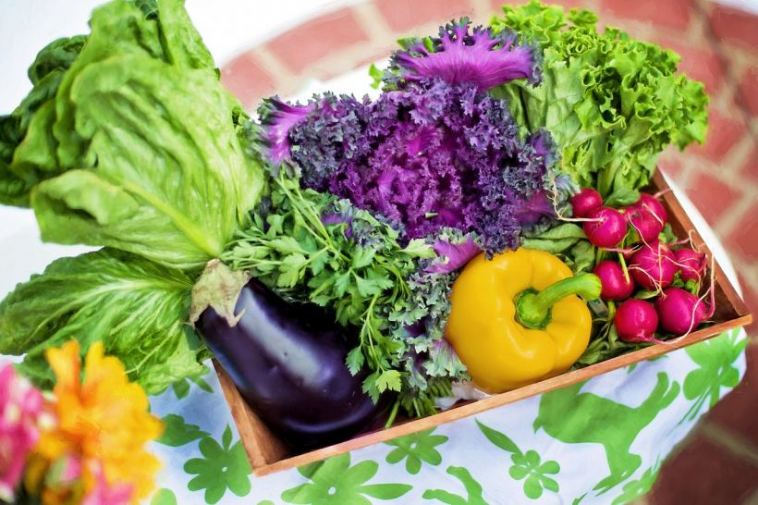- Like
- SHARE
- Digg
- Del
- Tumblr
- VKontakte
- Flattr
- Buffer
- Love This
- Save
- Odnoklassniki
- Meneame
- Blogger
- Amazon
- Yahoo Mail
- Gmail
- AOL
- Newsvine
- HackerNews
- Evernote
- MySpace
- Mail.ru
- Viadeo
- Line
- Comments
- Yummly
- SMS
- Viber
- Telegram
- JOIN
- Skype
- Facebook Messenger
- Kakao
- LiveJournal
- Yammer
- Edgar
- Fintel
- Mix
- Instapaper
- Copy Link
Introduction
Anyone who wants to ensure the safety and freshness of what they put on the table would want to grow fruits and vegetables organically.
Knowing what goes in your food from preparation to harvest gives you not just a sense of pride but also peace of mind since you know your produce are free from chemicals that might harm your family and loved ones.
If you’re interested in how to grow your own healthy organic fruits and vegetables, then this article might help. We will give you simple steps on how you can start making your own organic garden.
In no time, you’ll have an environmentally-friendly garden that serves only the freshest fruits and vegetables for your family to enjoy.
What is Organic Gardening?
Before we go to the step by step process, let’s first define the term “organic gardening.” To put it simply, organic gardening means using no chemical substances like synthetic fertilizers or pesticides to grow food.
However, organic gardening can also include your approach and awareness in creating less carbon-footprint in the environment.
To be successful in your attempt, you have to carefully plan your steps and dedicate your time and effort to growing your own produce.
>> Learn more gardening secrets at Garden Simply. Visit www.gardensimply.com for more gardening hacks.
How to Create an Organic Garden
An organic garden requires natural and environmentally-friendly ways to grow food. So aside from planting, you also need to learn how to naturally get rid of pests without using synthetic pesticides. Here’s how to grow your own healthy organic fruits and vegetables:
1. Find the right spot.
Finding the right spot for your organic garden is essential if you want your fruits and vegetables to thrive. Make sure your garden gets enough sun for the plants to live and grow. Limited sun exposure can mean limited fruits and vegetables to cultivate.
2. Create healthy and fertile soil.
The soil holds the nutrients needed by your plants propagate healthily. The perfect soil includes god texture and structure to keep the plants for more vigorous growth. Creating a homemade compost composed of manure or leaf mold creates the right amount of nutrients needed by your plants. These organic substances can help your plants absorb nutrients and improve your soil conditions.
3. Select your produce.
Commercially available seeds are often grown using chemicals like pesticides and fertilizers. Some are even genetically modified, which can cause health issues when consumed. To avoid such, find local farmers or stores that also grow fruits and vegetables organically. You can also find organic plants in your local garden center by checking out organic labels. Always choose the right plants for your organic garden.
4. Give the proper care for your garden.
Growing an organic garden does not end with planting. Proper care and knowing what your plants need is essential for your plants to thrive and survive. Some plants require more watering than others. So take the time to learn what each of your plants’ needs. You also need to check for pests and plant diseases constantly. Growing weeds can be controlled naturally by using mulch. It’s also useful to barricade your garden to prevent small animals from getting in.
5. Create biodiversity.
An organic garden thrives better with balanced and healthy biodiversity. Flowers attract bees, which are natural agents of pollination. More pollination means more yield. So planting flowers strategically in your organic garden can help generate better crops. It’s also helpful to know that some crops help each other. So planting them together can reduce their vulnerability.
Conclusion
Creating an organic garden requires planning and the right approach. Aside from which fruits and vegetables to grow, there are many other components to consider.
Before getting your hands dirty, make sure you understand and take time to learn what you need in order for your organic garden to thrive.
Also, you need to be mindful and take care of your plants every day until harvest. That way, you ensure that your fruits and vegetables grow healthy for your family to delight in.


